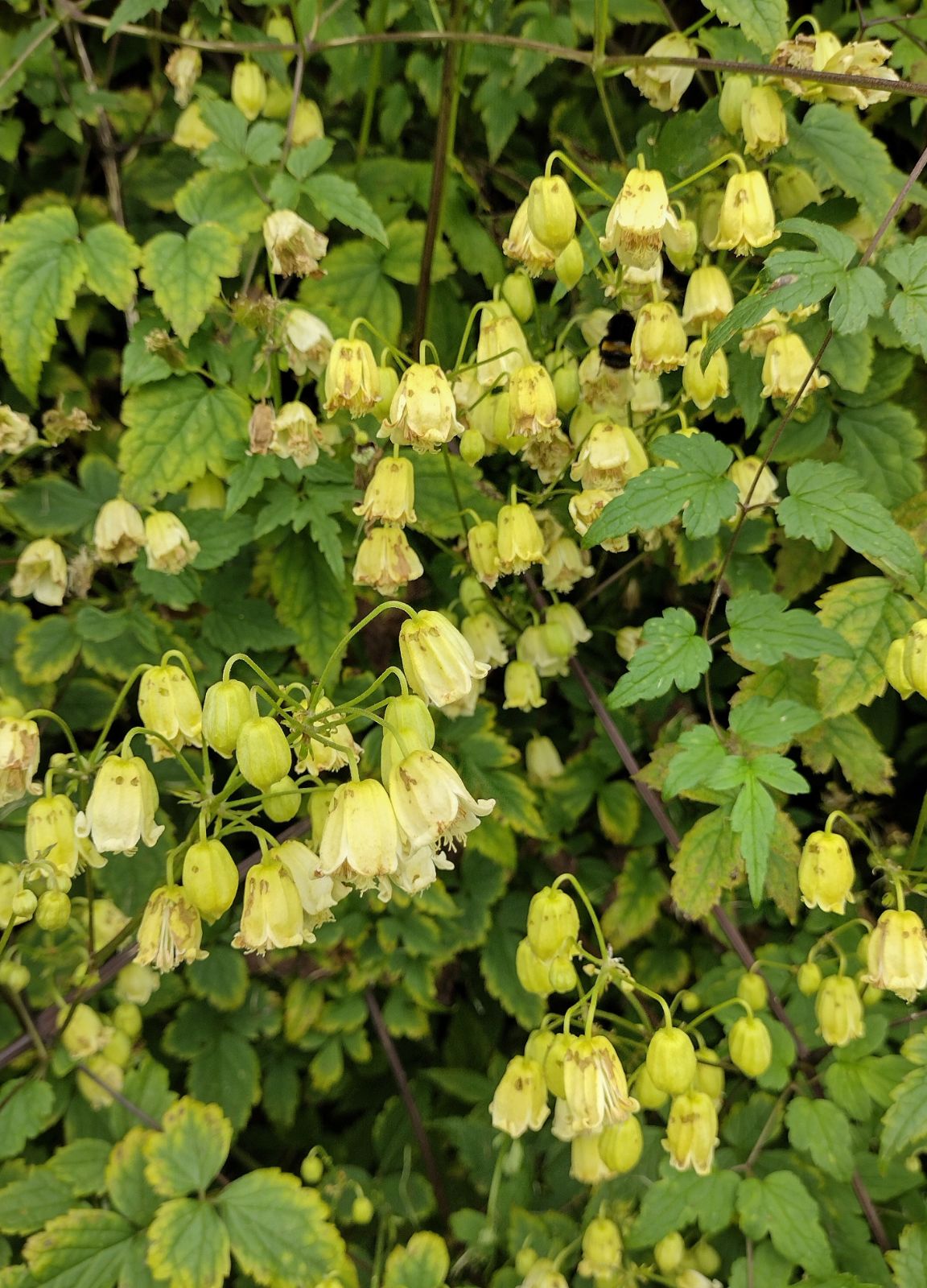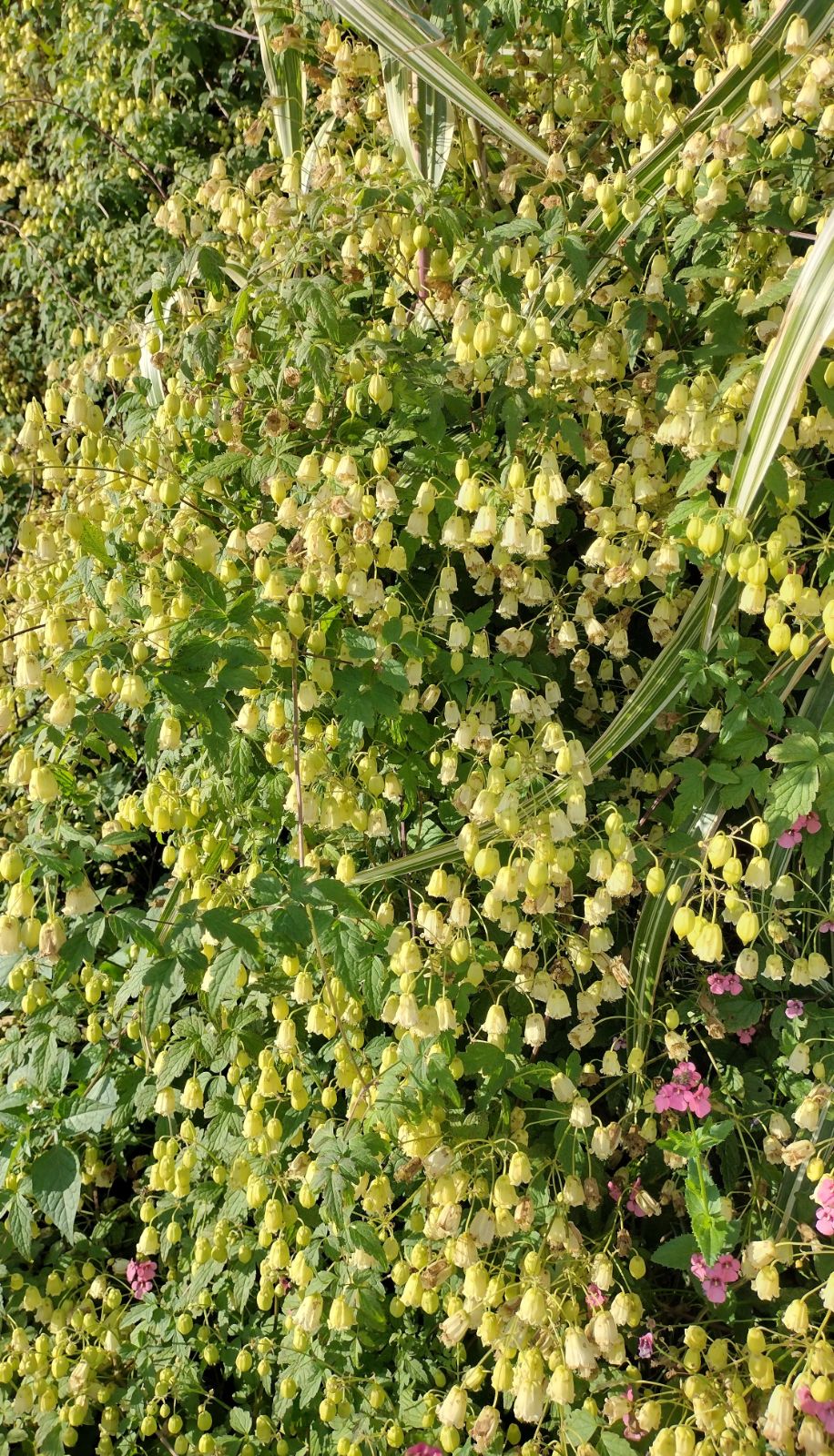Clematis rehderiana
Credits
Article from Bean's Trees and Shrubs Hardy in the British Isles
Recommended citation
'Clematis rehderiana' from the website Trees and Shrubs Online (treesandshrubsonline.
Genus
Synonyms
- C. nutans Hort., not Royle
- C. nutans var. thyrsoidea Rehd. & Wils., in part
- Clematis buchananiana Finet & Gagnep., not DC.
Infraspecifics
Other taxa in genus
- Clematis acutangula
- Clematis aethusifolia
- Clematis afoliata
- Clematis akebioides
- Clematis alpina
- Clematis apiifolia
- Clematis armandii
- Clematis × aromatica
- Clematis campaniflora
- Clematis chinensis
- Clematis chrysocoma
- Clematis cirrhosa
- Clematis connata
- Clematis crispa
- Clematis × durandii
- Clematis × eriostemon
- Clematis fargesii
- Clematis finetiana
- Clematis flammula
- Clematis florida
- Clematis fusca
- Clematis gracilifolia
- Clematis grata
- Clematis heracleifolia
- Clematis integrifolia
- Clematis × jackmanii
- Clematis × jouiniana
- Clematis lanuginosa
- Clematis lasiandra
- Clematis ligusticifolia
- Clematis macropetala
- Clematis maximowicziana
- Clematis meyeniana
- Clematis montana
- Clematis nannophylla
- Clematis napaulensis
- Clematis orientalis
- Clematis paniculata
- Clematis patens
- Clematis phlebantha
- Clematis pitcheri
- Clematis quinquefoliata
- Clematis ranunculoides
- Clematis serratifolia
- Clematis songarica
- Clematis stans
- Clematis tangutica
- Clematis texensis
- Clematis tibetana
- Clematis uncinata
- Clematis × vedrariensis
- Clematis verticillaris
- Clematis viorna
- Clematis virginiana
- Clematis vitalba
- Clematis viticella
A deciduous climber up to 25 ft high, with angled, downy stems. Leaves pinnate, 6 to 9 in. long, consisting of usually seven or nine leaflets. Leaflets broadly ovate, pointed, heart-shaped at the base, often three-lobed, coarsely toothed; 11⁄2 to 3 in. long, about two-thirds as wide; more or less downy above, clothed with silky down and conspicuously veined beneath; stalk of leaflets 1 to 11⁄2 in. long, hairy. Flowers mostly nodding, fragrant like cowslips; borne on erect, downy, ribbed panicles 5 to 9 in. high from August to October. The four sepals are of a soft primrose yellow, ribbed, and form a bell-shaped perianth 1⁄2 to 3⁄4 in. long; their points are recurved, and they are velvety outside, glabrous within; stamens about as long as the sepals, thinly hairy their whole length. Seed-vessels orbicular-ovoid, downy, terminated by a silky style 1 in. long.
Native of W. China; introduced to France, in 1898, by Père Aubert from near Tatsien-lu, thence to Kew in 1904. Wilson introduced it from the same neighbourhood in 1908. It is one of the latest flowering clematises and is worthy of cultivation on that account, also for the sweet fragrance of its pretty blossoms. Its naming has been much confused. When first introduced it was called C. buchaniana by the French; then it was identified with C. nutans. Both these species are Himalayan, and probably not in cultivation. (For a fuller history of this species see the article by B. O. Mulligan in Journ. R.H.S., Vol. 64, 1939, pp. 191–2.)
C veitchiana Craib, hitherto confused with the above under the name
Synonyms
C. nutans ”, differs in a number of characters. Its most noticeable distinction is in the leaves being doubly pinnate
the two or three lower primary divisions are usually trifoliolate. The leaflets, in consequence, are smaller and more numerous


